We’re all used to seeing the village’s white patrol cars with their flashing lights, antennas, and decals. But, policing used to be a whole lot different.
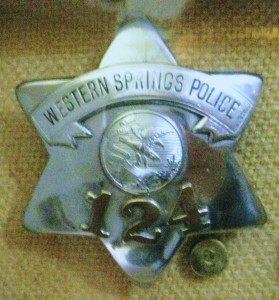
Western Springs police badge
In 1885, a year before Western Springs was incorporated as a village, the townspeople decided they needed a Town Marshall. Besides keeping law and order, the Marshall served as the dog catcher. He also cut and watered the grass at Grand Avenue School, which served as the first village hall. He was paid $100 a year, as well as 10% of the dog license fees and 50¢ for each wild dog he killed and buried.
By 1888, the Marshall’s title had changed to “Village Marshall” and his duties had expanded to collecting poll taxes from residents. In addition, he was charged with enforcing the requirement that all male residents work two days a year on roadway improvements in the village. In lieu of labor, residents could pay the Village Marshall 75¢ for each of the two days. Failure to work or pay was subject to a $4.00 fine.
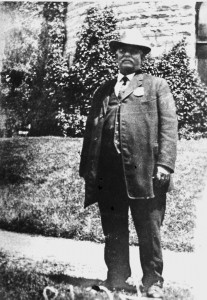
Village Marshall C. H. Rowe – 1896
In 1891, a year before the historic water tower was built, the duties of the Marshall were expanded to include the lighting and maintenance of the village’s street lamps, as well as the repair and improvement of sidewalks, most of which were built of wood planks. In that year, the Village Board also instructed the Marshall to begin collecting a $10 license fee for horse teams, which inflicted heavy damage on the streets.
By 1892, the Marshall’s salary was increased to $50 per month. But his duties were further expanded to include maintenance of the village jail and rounding up any loose livestock.
In 1900, residents lobbied the Village Board, unsuccessfully, to also hire a night watchman. So, 20 residents each pledged $1 a month to hire such a person. Due to growing salary demands, this was short-lived. But, as the village grew, the Village Board finally established the night watchman position at $15 per month and, by 1913, the position was funded at $60 a month.
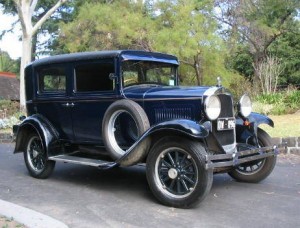
Willys Whippet sedan – 1929
The Board even authorized hiring two part-time Deputy Marshalls, who assisted in regulating automobile and bicycle traffic on weekends. They also had to enforce a new rule prohibiting the continued use or construction of outhouses within the village limits.
In the 1920’s there was a succession of Village Marshalls. In 1925, Clarence Burg assumed the position and was eventually made Chief of Police. However, his service was terminated in 1938 after the theft of golf clubs from a prominent citizen’s vehicle. The clubs were apparently found in Chief Burg’s trunk.
Technology changes were also frequent during these early years.
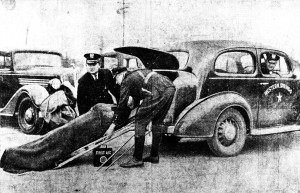
Combination Squad Car & Ambulance – 1936
In the 1920s the Village installed a red light atop the historic Water Tower. When the light was illuminated, a patrolling officer was required to contact the police station from one of several call boxes and respond as directed. In 1943, this system was replaced by the village’s first police radios.
In 1929, the police purchased a new Whippet squad car equipped with a special carburetor, giving it a top speed of 65 to 70 miles per hour, significantly faster than most cars of its day. Previous police vehicles were horse & buggies, followed by Model T Fords.
In 1936, the fire department was not yet providing an ambulance service. As a result, the police took delivery of a squad car that could be converted in less than a minute to accommodate a stretcher. The right front seat folded down, placing the patient’s head alongside the driver.
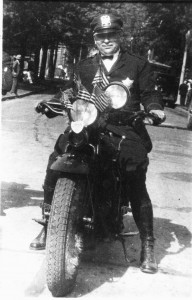
Chief Charles Peterson – 1951
The police also experimented with motorcycles to curb speeders. Here’s a photo of Chief Charles Peterson leading a Memorial Day parade on his cycle.
While police duties, vehicles, and uniforms have changed over time, the village is fortunate to have an extremely dedicated group of officers who patrol our streets and protect our residents.
